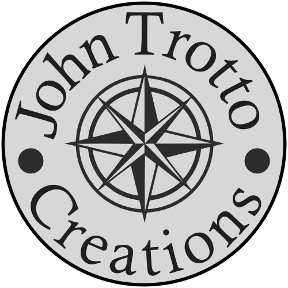Welcome to the Onshape forum! Ask questions and join in the discussions about everything Onshape.
First time visiting? Here are some places to start:- Looking for a certain topic? Check out the categories filter or use Search (upper right).
- Need support? Ask a question to our Community Support category.
- Please submit support tickets for bugs but you can request improvements in the Product Feedback category.
- Be respectful, on topic and if you see a problem, Flag it.
If you would like to contact our Community Manager personally, feel free to send a private message or an email.
How to copy or move a part from Point to Point ?
 john_trotto910
Member Posts: 5 ✭
john_trotto910
Member Posts: 5 ✭
in General
I would like to copy or move a part, by selecting say the bottom left corner point of it,, and then clicking another point where I want it to copy that part to,
placing that part using that bottom left point as the reference, placing it on the second point I select.
0
Comments
Hello John. Assembly or Part Studio? - Scotty
I've often wanted a point to point move. While the mate connector method works when you know and can control angles of connectors. It's not intuitive or obvious to users coming from other software and seems redundant to define a connector on a point to move from point to point. Just my $0.02
Try the "point pattern" feature...
Also as a general rule in parametric CAD moving parts like this should be a fairly rare thing...
When Transform is set to Translate by line, you have the option of using a line or points
If you don't see the GIF, then click within the rectangle below
Thank you for pointing that out. sheesh right under my nose. translate by line never even entered my mind as a way to go point to point.
Or you could set a dimension from place to place and then change the dimension
Ooopps? In 3D space? I wish I could! How would I do that?
Sorry, thought we were on sketches! Must read more thoroughly!
Not quite a "dimension" but there are a number of 3D point features that would let you place a point(s) based on x,y,z coordinates:
For example you have this one that offers different coordinate systems, as well ability to project points on faces and along paths:
https://cad.onshape.com/documents/576d1e60c6cb90985345ac37/v/a75950fc6c6b1a8edb7fa3e2/e/b3f611d12f6c5004c408f0ab
A simpler option would be this one, which lets you specify x,y,z offsets based on various starting references (including face, edges, vertices and mate connectors for "custom" coordinate systems):
https://cad.onshape.com/documents/309e817bcaf616677a834985/v/2a5b0d5c7243e2a8e6a93479/e/b28795ae9aec5a245cccb936
You can then use the resulting points for a "line" transform, or a point pattern https://cad.onshape.com/documents/9fca78cb66a0bc83e359eb3e/v/07cd4dc92eebefff4524a2fb/e/268a22f0ce6b3864a3637732
Yes, these are both possible ways to get reference points. I've used point patterns for positioning components on a 2.54mm pitch PCB, for example. But they require preparation prior to being put to use. What I really miss is a simple method of moving around bodies (or other entities!) in part studios.
What is the reason for not having a manipulator and snapping to points or edges in a part studio? It would only create a transform feature, just as the current tool does it, but with a much more intuitive (and faster) interface, especially in an early phase of the project where I use to play around with geometry, trying different options. I've had such in my old CAD an man was it fast. It even had an offset option that would optionally create a driving dimension.
I do currently try to base elements of my part design on mate connectors (them acting as some kind of sub-origins), so I can arrange them more easily, but that's not always easy and seldom fast.
I think part of the issue is that fundamentally you shouldn't be doing this much in parametric CAD… You are supposed to draw things in the right place to start with.
For early one experimentation you can use a layout sketch to drive the position of things, especially useful if you use the "final" button, and/or you can use assemblies instead of patterning/moving copies of things in a part studio.
@eric_pesty That is true, but the presence of the transform tool tells us a story. While we should not do that in the first place, we all know that in theory, theory and reality are identical, though in relatity they aren't. We cannot properly express every thought we have in a 2D sketch, let alone develop it in 2D. I have worked with 3D sketches once. The approach wasn't bad, but it was a niche product. Here, we only have 2D sketches, and they take us a long way, but there might be valid shortcuts, depending on the task at hand.
So while we have the transform feature, because everybody knows that there are situations where we would desperately want to move or otherwise transform things (might be derived or imported, too!) the means of doing so have been made as difficult to use as possible, and to make things more confusing, they follow a completely different workflow than moving things within an assembly.
I believe it would make the overall experience better, if the logic behind transforming, at least behind moving things, would be consistent in part studios and assemblies.